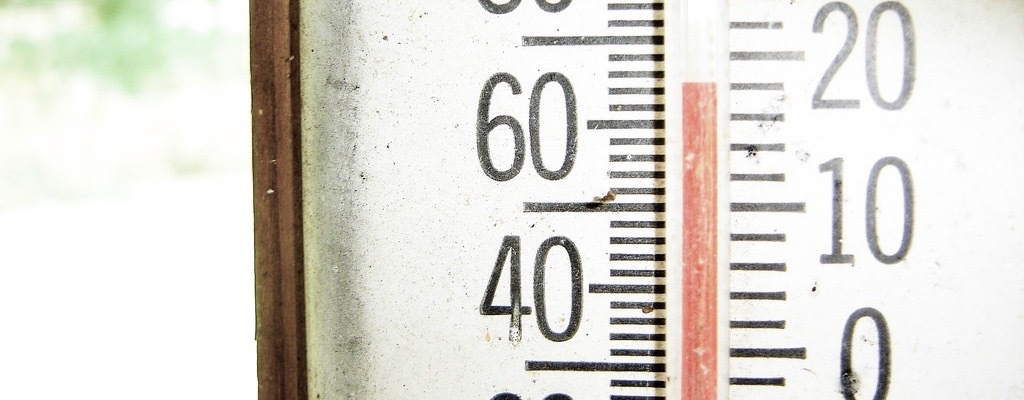In office environments, someone always complains about the temperature. Women have a reputation for saying it’s too cold, while men complain when the thermometer climbs just a few degrees. It would make sense to study the effects of air temperature in offices to see what makes employees happy, healthy, and productive, not to mention creative, analytical, focused, etc.
I went looking for strong research about the effects of air temperature on workers, and so far I’ve been appalled at just how little there is.
Women Wish They Were on Venus
Everyone writing about this topic cites a 2004 Cornell study that showed (summarized in Lang, 2004) typing errors decreased by 44 percent and output increased 150 percent when the thermostat was bumped from 68 to 77 degrees Fahrenheit. It was a month-long study, which is good. And the study measured something measurable: workers’ time spent typing and how many errors they made. However, the participants in the study were all women, and there were only nine of them!
While it’s one of the most popular studies being cited it’s barely anything more than an interesting little experiment.
Warm Temperatures=Bad Decisions
A different study from 2012 (Chemma and Patrick) looks at the effects of temperature on decision-making, but it’s from the point of view of marketing science rather than productivity. They find that warmer temperatures, up to 77 degrees Fahrenheit, deplete people’s resources and make them “more likely to perform poorly on cognitive tasks that require processing resources.” If you looked at that finding from a productivity perspective, it’s the opposite of what happened to the typists in the Cornell study.
Hot and Cold is Personal
They guy behind the Cornell study actually had a whole lot more to report than simply the change in typing errors of nine workers. He presented his work at the Eastern Ergonomics Conference and Exposition (New York, June, 2004) and made summary slides of his talk on indoor environmental quality available online. Early on, he mentions that productivity decreases if it’s too hot, too cold, too noisy, when the air is polluted, when devices nearby vibrate, when workers don’t have enough privacy, and so forth. But later he gets deeper to say that researchers need to “focus on the performance of the individual and the environment experienced by that the individual.” In other words, whether it’s too hot or too cold is subjective, and self-reporting is more important here than a precise thermometer reading.
Hedge is advocating for more personalized assessment and modification. That stance is interesting to me because I’ve long grappled with the differences between strong research and personalized data. Research, especially in the social sciences, gives us likelihood. It’s likely that warmer temperatures for women typists will result in them being more productive and creating fewer errors. Personalized data gives us precise information about ourselves and how we react to different factors. For example (and I’m making up the details), Susan makes the fewest errors when she doesn’t feel too hot or too cold, which is at about 75 degrees Fahrenheit for her in the winter and 73 degrees in the summer. Finding those precise details about each person is very hard to do.
Until we get to a place where gathering and analyzing personalized data is easier, we’ll have to keep relying on strong research. But Hedge’s point about subjectivity still remains. New research on office temperatures and their effects on productivity, more of which is desperately needed, should take self-reporting into consideration, asking people how they feel rather than recording a thermometer’s readouts.
References
Cheema, A., & Patrick, V. M. (2012) Influence of Warm Versus Cool Temperatures on Consumer Choice: A Resource Depletion Account. Journal of Marketing Research: December 2012 (49), 6, 984-995.
Lang, S. S. (2004). Study links warm offices to fewer typing errors and higher productivity. Cornell Chronicle. Retrieved March 4, 2017 from http://journals.ama.org/doi/abs/10.1509/jmr.08.0205?code=amma-site.
Image from Andy Melton, CC.

[…] affect people’s ability to be productive. Every aspect of the work environment, including temperature, noise, and light, takes a toll in making a physical space more or less conducive to how we […]
LikeLike
Don’t forget to factor in how important the humidity levels are with the measured temperatures to determine the apparent temperature people desire.
This probably explains why Susan likes it 75 in winter and 73 in summer. Winter humidity is lower – probably closer to 20-30% – so the apparent temperature is about 72 (while measured temperature is 75). Summer humidity levels are higher – probably around 50-60% – which causes the apparent temperature to be closer to the measured temperature, or about 72-73.
LikeLike
Great point about humidity. Scholars of this stuff tend to say “thermal comfort” instead of temperature for the exact reason that the degree in Fahrenheit or Celsius is a moot point. What matters is how each worker feels: comfortable, too cold, too hot.
LikeLike